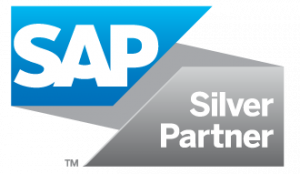Introduction: The digital transformation knows no standstill
Hardly any other area is developing as rapidly as information technology. What is considered an innovation today may be standard or outdated tomorrow. Companies that do not follow suit quickly lose competitiveness. But what trends are currently shaping the IT world – and where is the journey heading in the next three to five years?
1. Artificial intelligence – from hype to basic technology
AI has long been more than just a buzzword. According to a study by McKinsey (2023), 55 percent of companies worldwide are already using AI applications in at least one business area. Particularly dominant: generative AI such as ChatGPT, which is revolutionizing software development, customer service and decision-making processes.
Table of Contents
- Introduction: The digital transformation knows no standstill
- 1. Artificial intelligence – from hype to basic technology
- 2. Cybersecurity – more than just firewalls
- 3. Low-code and no-code – the democratization of IT
- 4. Cloud and edge computing – flexible and local at the same time
- 5. Integration and platform thinking – SAP at the center
- Outlook: What does this mean for companies?
- Conclusion: The future begins today

“AI is the defining technology of our time.” – Satya Nadella, CEO of Microsoft
Outlook: In the coming years, AI will be integrated even more closely into business processes – from automated SAP approvals to predictive maintenance and AI-based decision assistants.
2. Cybersecurity – more than just firewalls
With increasing digitalization, the attack surface is also increasing. According to the ENISA Threat Landscape Report (2024), the number of reported cyberattacks has more than doubled compared to 2020.
“Security is not a product, it’s a process.” – Katie Moussouris, security expert and founder of Luta Security
Outlook: In the coming years, zero-trust architectures, AI-driven threat detection and security by design will become the standard – not only in corporations, but also in upper mid-sized companies.
3. Low-code and no-code – the democratization of IT
The demand for software solutions exceeds the capacities of traditional development teams. Low-code and no-code platforms enable business departments to digitize processes themselves – without programming knowledge.
According to Gartner, around 70 percent of new business applications will be based on low-code technologies by 2027 (Gartner Forecast 2023).
Outlook: Companies that integrate such tools at an early stage – for example, for quotation creation or approval in SAP – gain significantly in agility and speed of innovation.
4. Cloud and edge computing – flexible and local at the same time
While cloud computing has long been established, interest in edge computing is growing. Especially in manufacturing or logistics, data is processed close to the point of origin in order to avoid latencies and meet data protection requirements.
“Cloud and Edge are not either/or – they are complementary.” – Thomas Kurian, CEO of Google Cloud
Outlook: In the next five years, a hybrid model will prevail: central data storage in the cloud, supplemented by decentralized edge processes – for example, in IoT applications.
5. Integration and platform thinking – SAP at the center
At munich enterprise software, we also see that the trend is moving away from isolated solutions to platform-based add-ons that can be seamlessly integrated into SAP – whether for communication, approvals or monitoring.
Outlook: The focus will be more on end-to-end digitalization. Companies are not looking for tools, but integrated process solutions that can be implemented quickly, are maintainable and future-proof.
Outlook: What does this mean for companies?
- IT is becoming a management task: CIOs and CDOs have long been part of management.
- Processes instead of projects: Digitization is never “finished” – but a constant optimization process.
- People at the center: User experience, acceptance and change management are becoming critical to success.
Conclusion: The future begins today
Whether it’s AI, cloud, security, or integration, technological change is rapid, but it offers tremendous opportunities. Companies that understand the trends and use them in a targeted manner not only secure competitive advantages – they actively shape the future.
And that’s exactly where we support you – with smart SAP add-ons, personal advice and practical solutions.
Want to know more about how our solutions fit into your IT strategies?
Talk to us – we are happy to be there for you:




